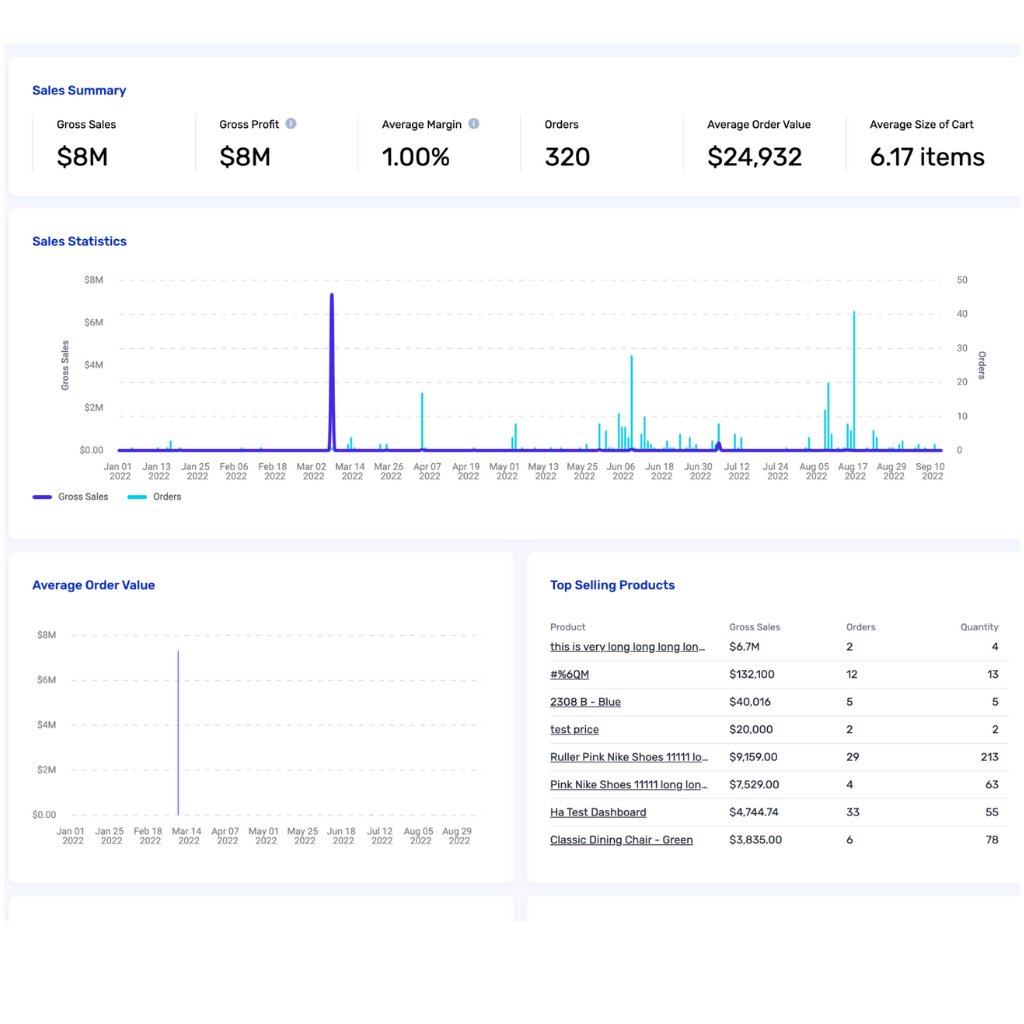As an ecommerce owner, you are well aware of the fierce competition and the ever-changing landscape of online businesses. Knowing your product metrics can help you succeed.
In this fast-paced environment, staying ahead of the curve is crucial for your success.
But how can you ensure your ecommerce website is performing at its best? The answer lies in measuring product metrics.
In this article, we’ll explore the power of 4 product metrics. Let’s get started.
Conversion rates - Gain higher sales
The conversion rate is one of the most critical product metrics for any ecommerce website. It reveals the percentage of visitors who take the desired action, such as making a purchase, signing up for a newsletter, or filling out a lead form.
Understanding your conversion rate can help you identify strengths and weaknesses in your sales funnel.
How to boost your conversion rate.
Optimize your website’s user experience – A cluttered and confusing interface can deter potential customers, leading to abandoned carts and lost sales.
Streamline your website’s design – Make the navigation intuitive, and ensure that the checkout process is smooth and hassle-free.
Consider A/B testing – Experiment with different elements of your website, such as button colors, call-to-action texts, and product page layouts.
For more tips on conversion rates check out our article 14 Ways to Increase Sale Conversion Rates.
By analyzing the results, you can determine which variations drive the highest conversion rates and implement them permanently.

Let’s take an example. Let’s say a boutique online fashion store that noticed a high number of visitors adding items to their carts but abandoning them at the last moment.
By analyzing this metric, they discovered a clunky and confusing checkout process. Implementing a more user-friendly checkout page led to an immediate boost in their conversion rate and an increase in sales.
Bounce Rates - Keep your visitors engaged
Another good product metric to know is bounce rate. The bounce rate indicates the percentage of visitors who leave your website after viewing only one page.
A high bounce rate may imply that your content or products are not engaging enough to hold their attention.
To reduce your bounce rate and keep visitors engaged on your ecommerce site, focus on the following strategies:
Compelling and relevant content – Ensure that your product descriptions, blog posts, and other content are informative, engaging, and relevant to your target audience. High-quality images and videos can also enhance the overall user experience.
Mobile optimization – With the increasing use of mobile devices for online shopping, it’s crucial to have a mobile-responsive website. A seamless mobile experience will keep visitors on your site longer and encourage them to explore more pages.
Internal linking – Guide visitors to related products or relevant blog posts through internal linking. This can entice them to explore further and discover more of what your ecommerce website has to offer.
Bounce rates affect every ecommerce owner, let’s take a look at an example.
An electronics store noticed a high bounce rate on a particular product page. Through user feedback and further investigation, they realized that the lack of product reviews and detailed specifications was deterring potential customers.
By addressing this issue, they saw a substantial decrease in bounce rate and an increase in product inquiries.
Average order value - Boost revenue per order
The average order value (AOV) reflects the average amount spent by customers during a single transaction. This metric is valuable in upselling and cross-selling strategies.
To increase your AOV, consider the following tactics:
Product bundling – Create bundles or packages that combine complementary products at a slightly discounted price. This strategy can entice customers to purchase more items to take advantage of the offer.
Free shipping thresholds – Offer free shipping for orders above a certain amount. Customers may be motivated to add more items to their carts to qualify for the free shipping incentive.
Upselling and cross-selling – Implement upselling and cross-selling techniques on your product pages and during the checkout process. Recommend higher-priced or related products that complement the items in the customer’s cart.

Average order value is essential product metric to know. Let’s look at an example. A subscription-based grooming products company used AOV data to refine its product bundling strategy.
By offering enticing grooming kits with carefully curated products, they encouraged customers to spend more, resulting in a significant increase in revenue per transaction.
Customer lifetime value - increase relationships
The customer lifetime value (CLV) measures the total revenue a customer generates throughout their relationship with your business. Understanding this product metric helps you focus on customer retention and loyalty.
To enhance customer lifetime value, prioritize the following approaches:
Exceptional customer service – Provide top-notch customer service to build trust and loyalty. Promptly address customer inquiries and concerns, and strive to exceed their expectations.
Personalization – Leverage customer data to offer personalized product recommendations and tailored marketing campaigns. Customers are more likely to remain engaged when they feel valued and understood.
Loyalty programs – Implement loyalty programs that reward repeat customers with exclusive perks, discounts, or early access to new products. These incentives can motivate customers to return to your ecommerce store repeatedly.
Let’s look at an example of our last metric.
An online pet supplies store discovered that its repeat customers accounted for a significant portion of their revenue.
They implemented a loyalty program that rewarded frequent buyers with exclusive discounts and personalized offers, leading to increased customer loyalty and higher CLV.

Utilize product metrics for success
By embracing the power of product metrics, you can gain invaluable insights that drive your online business toward success.
Understanding your conversion rate, bounce rate, AOV, and CLV empower you to optimize your website, marketing strategies, and customer experiences.
Remember, metrics are not just numbers; they help you understand your customers’ needs and preferences.
By tapping into the stories that your data tells, you can create compelling customer experiences, build lasting relationships, and watch your ecommerce business thrive.
Breadstack can help you gain a complete overview of all data – even in real-time. Discover the difference in knowing your analytics.

